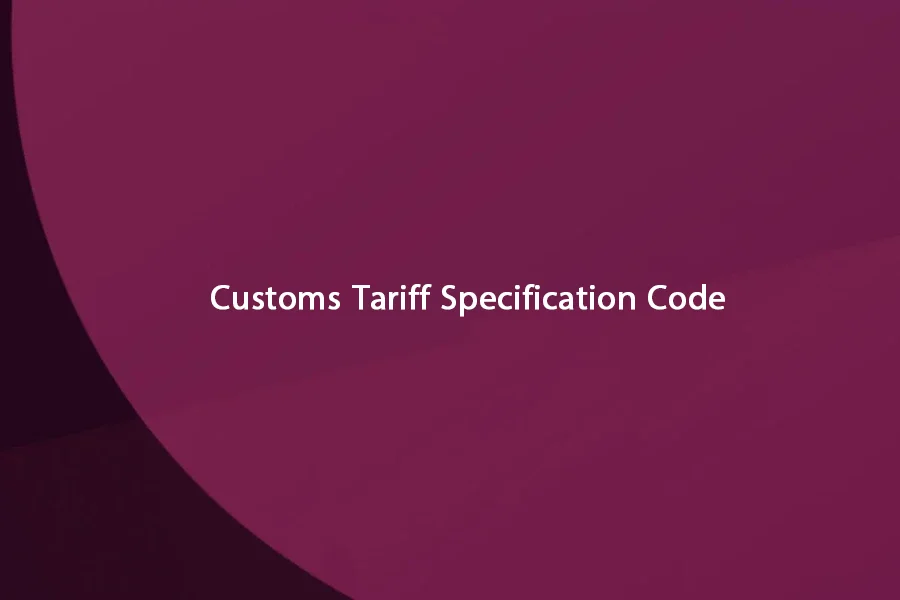Customs Tariff Specification Code

“TSC (Tariff Specification Code) is a coding system used in customs to determine customs tariffs and classify shipments. The customs value of goods is calculated based on their final price at origin, insurance, transportation costs, and other related factors. This customs value plays a crucial role in determining customs tariffs and duties and is recorded in the system using the TSC code. In other words, TSC is a unique code assigned to each commercial item and includes information such as tax rates, customs tariffs, and other export and import regulations related to the goods. Using the TSC code helps customs and other relevant authorities to correctly classify shipments and apply appropriate tariffs according to the rules of goods valuation. In the following, we will examine the customs TSC and related points in more detail and provide useful information in this regard. The customs value of TSC refers to a set of costs and factors related to the import of goods that are used to determine customs duties. This value consists of various components, which we will discuss below: Components of TSC Customs Value:
CIF Purchase Price: This section includes the final price of the goods, insurance costs, and transportation costs to the destination port or border. In fact, CIF stands for Cost, Insurance, and Freight. Incidental Costs: These costs include items such as loading, packaging, and other costs related to the transportation of goods. Taxes and Customs Duties: This section includes the calculation of import duties, value-added tax, and other customs duties that are determined based on the customs value of the goods. Role of Customs TSC in Goods Import: Customs TSC plays an important role in the goods import process and is divided into three main parts:
Review of Duties and Customs Rights: The customs value is used as a basis for evaluating and calculating the amount of customs duties paid. Import and Export Control: TSC helps prevent violations and false statements by importers regarding the value of imported goods. Legal Management: The use of TSC ensures compliance with customs and domestic trade regulations. In summary, Customs TSC is a coding system used to determine the customs value of goods and apply appropriate tariffs. This system helps customs manage the import and export process accurately and legally. Methods of Determining TSC Customs Value There are various methods for determining TSC value. The most important valuation methods are based on the following documents:
Permit or Insurance Certificate Proforma Invoice (Goods Purchase Agreement) Bill of Lading Commercial Invoice Formula for Calculating TSC Customs Value Customs value is calculated using the following formula: Customs Value = Goods Price + Freight Cost + Insurance Cost Customs uses this formula to review customs duties and determine the TSC customs value. Customs TSC System Customs uses the online TSC (Tariff Specification Code) system to create a suitable method for determining the value of goods. To check the goods value ID, you must refer to the Customs TSC system and enter items such as brand and goods tariff. Benefits of TSC Customs Value
Before the launch of TSC, the value of goods was determined by customs experts, which caused problems such as time-consuming customs processes. After the launch of this system, the valuation of goods is done automatically and based on the details of the goods. This system standardizes the value of goods in all customs of the country and prevents customs disruptions. The process of determining customs value is facilitated. Traders can register their goods information and receive the customs value ID by referring to the TSC online system. Facilitating the customs process, preventing disruption in goods valuation, high speed of determining customs value, and standardizing the value of goods in all customs of Iran are the main benefits of using TSC. More than seventy thousand goods are registered in this system and today it is one of the most common methods of determining the value of goods. Difference and Similarity of TSC and HS Code
TSC and HS Code are both used for goods classification. HS Code is an 8-digit code determined by the World Customs Organization and is classified based on similar characteristics of goods. HS Code is used in commercial applications such as taxes, goods classification, customs services, import duties review, and trade statistics. TSC is a 4-digit code used by the Islamic Republic of Iran Customs to determine the value of export and import goods. TSC is determined based on specific characteristics such as technical and chemical details, goods specifications, physical information, model, and tariff code. The main purpose of TSC is to determine value-added tax, customs duties, and customs rights. Differences between TSC and HS Code:
Number of Digits: TSC is four digits and HS Code is eight digits. Application: HS Code is used for services and goods classification, and TSC is used for determining the value of goods. Determining Organization: HS Code is determined by the World Customs Organization and TSC is determined by the Islamic Republic of Iran Customs. TSC System Application
The TSC system is used to register the value of import and export goods. This system is designed to prevent the registration of false information in customs declarations. As the official customs system, TSC prevents heavy fines for false statements. Before purchasing a new item, you should be aware of its customs value. To access the TSC system, visit tsc.irica.co.”
